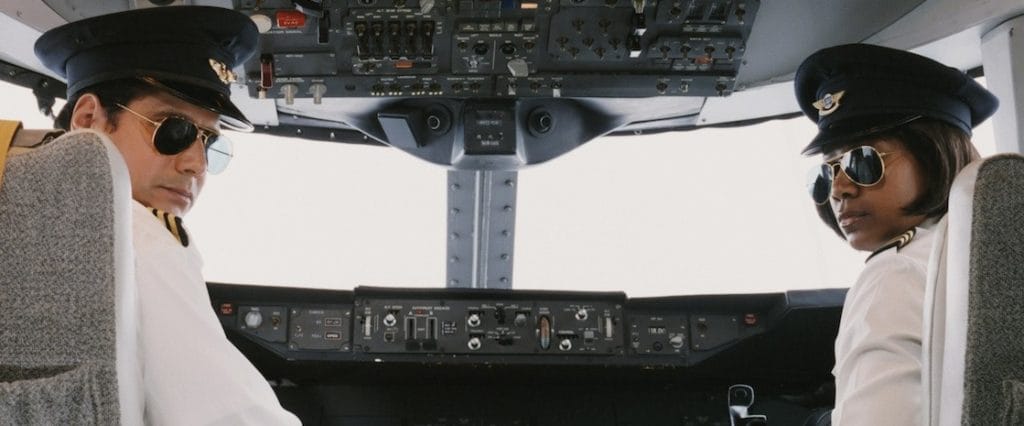Forty percent of pilots killed in plane crashes had taken over-the-counter or illegal drugs prior to takeoff in recent years, a marked climb over the last two decades, a new safety report has found. The share of pilots using at least one drug rose from 9.9 percent to 39 percent over the study period, which covered more than two decades, while positive tests for two drugs rose from 2 percent to 20 percent. By far the most common drug found in the bodies of pilots was an antihistamine contained in over-the-counter allergy, cold and sleep medicines that can induce drowsiness. The report noted that as the pilot population ages, the likelihood for this risk “is increasing due to the growing use of potentially impairing drugs.” The percentage of pilots who tested positive for illegal drugs was relatively low overall at 3.8 percent, but that was up 65 percent from 2.3 percent at the start of the study. The jump, called disconcerting, was mostly attributed to increased marijuana use in the last 10 years. Commissioned by the National Transportation Safety Board, the study examined toxicology reports on 6,677 pilots who died in crashes from 1990 to 2012. Because most plane crashes involve non-commercial flights, nearly all of the dead were private pilots. “The key take-away from this study for every pilot is to think twice about the medications you’re taking, and how they might affect your flying,” concluded NTSB acting Chairman Christopher Hart. “Many over-the-counter and prescription drugs have the potential to impair performance, so pilots must be vigilant to ensure that their abilities are in no way compromised before taking to the skies.” The board noted that as the nation ages, so do its pilots, which will prompt a greater demand for more and newer drugs. The results of the examination of the pilots’ toxicology tests, the report noted, “reflect trends in the general population and likely indicate a significant increase in drug use” by pilots, too. Other notable findings in “Drugs in Aviation,” expected to be available to the public soon, were listed by the Associated Press. They include:
- More than nine out of 10 of pilots tested were private rather than commercial pilots, and 98 percent were male.
- The average age of pilots killed rose markedly between 1990 and 2012, from 46 to 57. The average age of pilots fatally injured was five to 15 years older than the population of active pilots.
- The toxicology results showed an upswing in pilot use of a variety of drugs, including those that treat seizure disorders, psychiatric conditions and other illnesses that risk impairing the pilot.
- The most frequently found drug was a “sedating” antihistamine such as Benadryl. Various types of antihistamines were found in 9.9 percent of pilots who died in the last five years of the study, up from 2.1 percent in the first years of the time span.
- Antidepressants were detected in 5.3 percent of the deceased pilots in the latter period of the study from 2008 to 2012, a number that grew from a mere 1 percent from 1990 through 1997.
It was a 1983 drug-related accident that prompted the FAA to begin testing deceased pilots. That year, the NTSB concluded that drug use contributed to poor piloting skills and decision-making by the crew of a cargo plane that crashed at Newark International Airport. Post-crash tests revealed that, within 24 hours of the crash, one pilot had smoked marijuana and the other had consumed a drug then found in diet aids and still found in cold and allergy medicine called phenylpropanolamine. Technology has so greatly improved that some 1,300 chemicals are identifiable by FAA labs. Among the NTSB study recommendations was that the FAA address marijuana, which is increasingly being used as more states legalize it for medical and recreational purposes. “There is a gap,” the report summary states, “in the Federal Aviation Administration’s policies regarding marijuana that may lead to confusion about the agency’s position on marijuana use by pilots not subject to mandatory U.S. Department of Transportation drug and alcohol testing requirements.” Other recommendations by the NTSB advised the FAA and state governments to better convey the safety risks of legal and illegal drug use to pilots and others operating transportation modes and encourage healthcare providers to inform their pilot patients about the impact legal and illegal drugs may have on their job performance. A safety alert was issued urging pilots to check with their healthcare providers about the potentially risky effects of the medications they are taking. And very simply, the alert reminded pilots to take the time to read and reread their medicine’s dosing cautions, warnings and instructions and to be mindful of impairment signs. The Airline Owners and Pilots Assn. (AOPA) said this week that it supports the alert and education of pilots about drug risks. However, AOPA President Mark Baker said there are “far too many gaps and unknowns in this [NTSB] study for us to be able to draw any meaningful conclusions about aviation safety. Overall the number of general aviation accidents has declined significantly over the past decade, and continuing that trend should be our focus.” The full report should be available in a few weeks, the NTSB promised.

